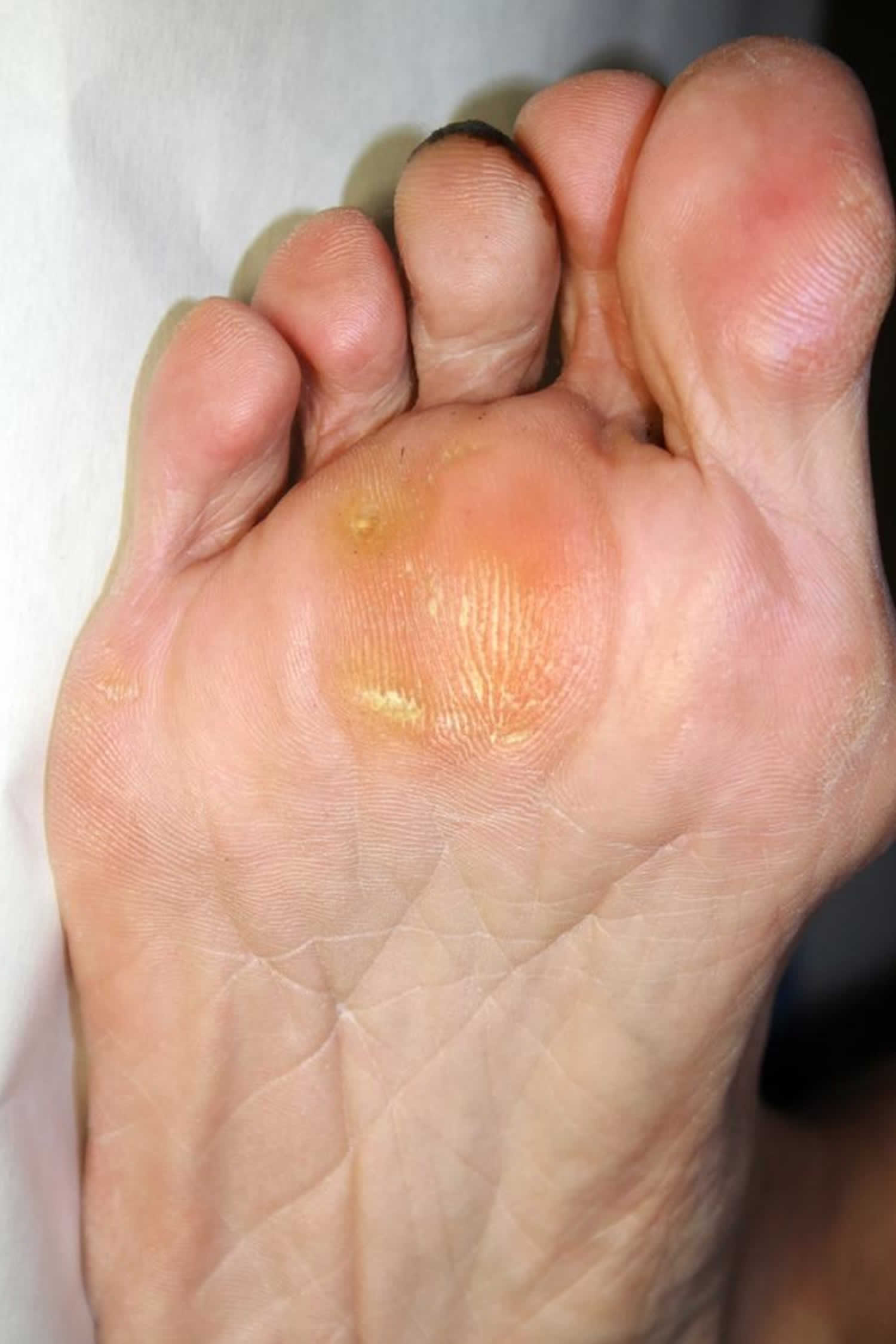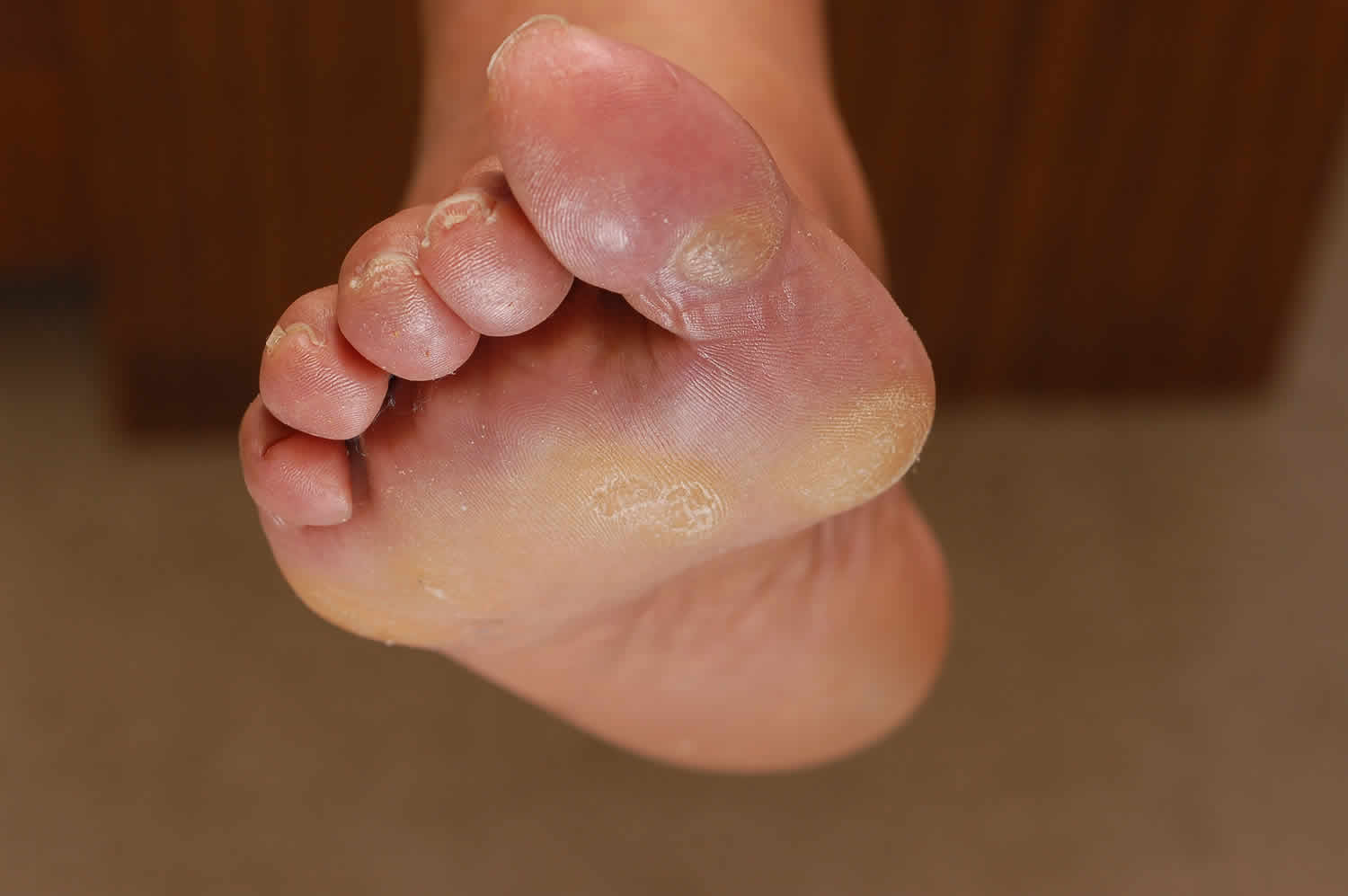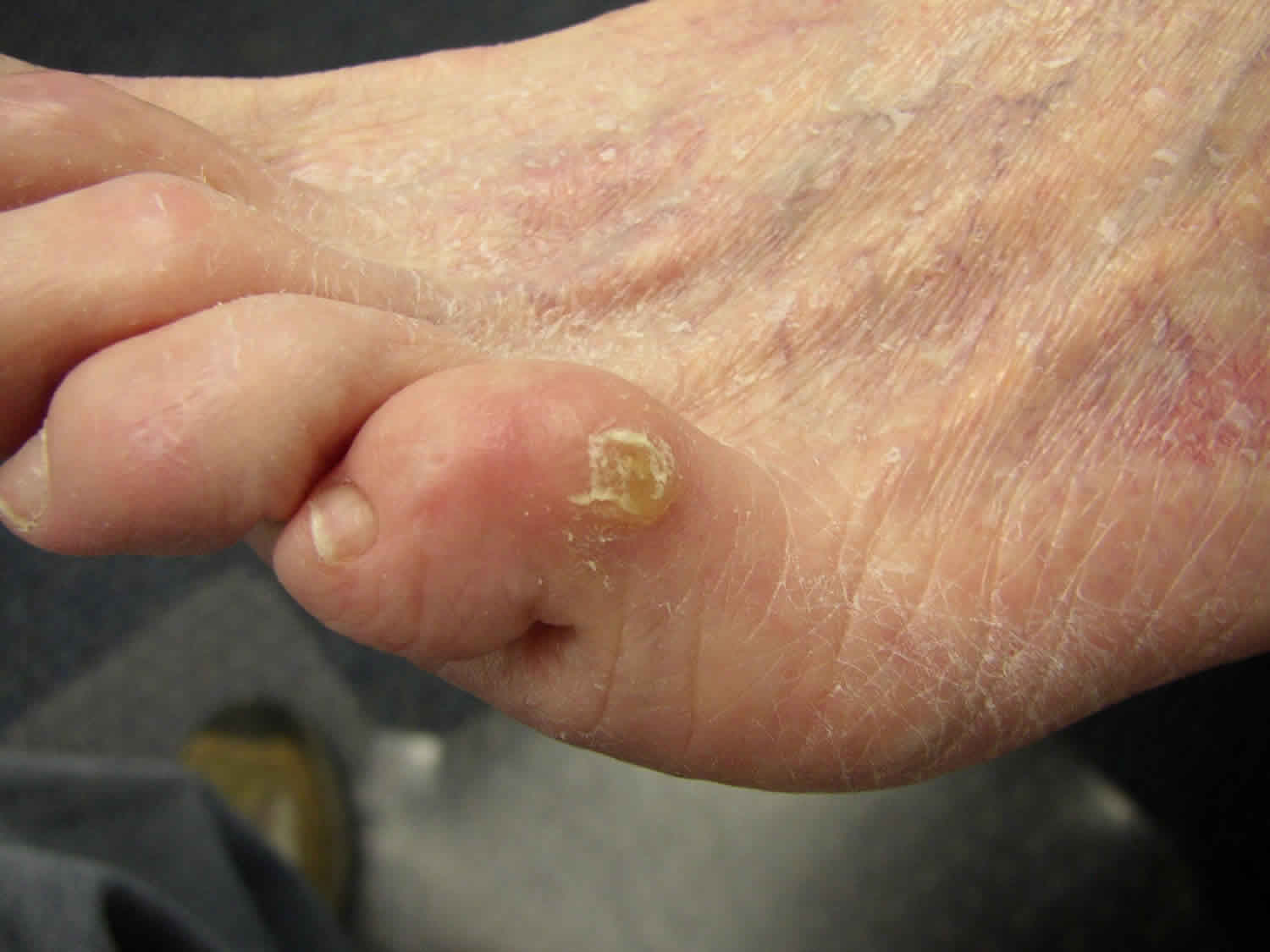Contents
Calluses on feet treatment
Corns and calluses are hard, thickened areas of skin that form as a result of friction or pressure on the skin. Corns and calluses develop naturally to help protect the skin underneath them. Calluses are rarely painful. They usually develop on the soles of your feet, especially under the heels or balls, on your palms, or on your knees. Calluses vary in size and shape and are often larger than corns. Calluses form at points where there is a lot of repeated rubbing for a long period of time — such as the hours spent walking. The skin hardens from the pressure over time and eventually thickens, forming a hard tough grayish or yellowish surface that may feel bumpy.
Some calluses also form on the outside of the big or little toe or the heel. Tight shoes and high heels often cause calluses because they put a lot of pressure on your feet at points that aren’t used to all of that stress.
How to get rid of calluses
- Avoidance of the repetitive forces causing calluses, such as altering shoe style, is the best method of prevention.
- Wear comfortable shoes and socks. Stick to well-fitting, cushioned shoes and socks until your corn or callus disappears.
- Soak the corn or callus in warm water. Do this for about five to 10 minutes or until the skin softens.
- File the corn or callus with a pumice stone or an emery board. First dip the pumice stone in warm water, and then use the stone to gently file the corn or callus. Use circular or sideways motions to remove dead skin.
- Be careful not to take off too much skin: Doing so could cause bleeding and infection.
- Apply moisturizing lotion or cream to the area daily: Look for a moisturizing lotion or cream with salicylic acid, ammonium lactate, or urea. These ingredients will help gradually soften hard corns and calluses.
- Use padding: To protect calluses from further irritation during activity, cut a piece of moleskin – available at your local drugstore – into two half-moon shapes and place around the callus.
- Corns take a little bit longer to go away.To prevent a corn from making contact with your shoe, you can buy special doughnut-shaped pads that let the corn fit right into the hole in the middle to relieve pain and pressure. Corn donut-shaped adhesive pads are also available at drugstores. There are also pads that contain salicylic acid, which takes off the dead skin to help get rid of the corn. If the corn sticks around for a while and keeps hurting, you may need to see a podiatrist.
- Wear shoes that properly fit: A common cause of corns is a shoe that isn’t the right size and shape for your foot. To get the right fit, shop for shoes at the end of the day, when your feet may be slightly swollen. In addition, ask a clerk to measure your foot, and choose shoes that aren’t too loose or tight.
- Shoe pads that go inside your shoes also can help relieve the pressure so foot calluses can heal. Pumice stones and foot pads are sold in many grocery stores and drugstores.
- Keep your toenails trimmed: Toenails that are too long can force the toes to push up against your shoe, causing a corn to form over time. To remove this pressure, keep your toenails trimmed.
- To avoid infection, do not try to shave off the corn or callus. See your doctor, especially if you have diabetes or circulation problems.
Ease the discomfort of painful cracks (fissures):
- Apply a thick, lubricating ointment such as petroleum jelly.
- Seal the surface with adhesive such as Liquid Bandage™ or nail glue.
- Use antibiotic ointment in case of infection
- Cover with a thick adhesive plaster.
Most corns and calluses gradually go away when the friction or pressure causing them stops. However, if you aren’t sure what is causing your corn or callus, if the hardened skin is very painful, or if you have diabetes, see a podiatrist or your doctor.
Sometimes protruding bone has to be surgically removed by an orthopaedic surgeon, for example bunion repair.
Treatments your doctor may prescribe
Your doctor may:
- Pare the callus with a scalpel.
- Prescribe a topical medication, such as urea, to help dissolve thickened skin.
- Give you antibiotics if a corn or callus is infected
- Refer the patient to a podiatrist, a health care provider specializing in foot care.
If you have diabetes, heart disease or problems with your circulation, don’t try to treat corns and calluses yourself.
These conditions can make foot problems more serious. See a doctor or foot specialist.
See a doctor if you think you have a corn or callus and:
- you have diabetes
- you have heart disease or problems with your circulation
- it bleeds, or has any pus or discharge
- it hasn’t improved after treating it at home for 3 weeks
- the pain is severe or stopping you doing your normal activities
Figure 1. Calluses on feet
What’s a corn?
Like calluses, corns are also areas of hard, thick skin. Corns are smaller than calluses and have a hard center surrounded by inflamed skin. Corns tend to develop on parts of your feet that don’t bear weight, such as the tops and sides of your toes and even between your toes. They can also be found in weight-bearing areas. Corns can be painful when pressed.
Like calluses, corns come from pressure or repeated rubbing of the toes. Corns usually develop after wearing shoes that are tight around the toe area.
Figure 2. Corns on foot
What causes calluses on feet
A callus is a skin condition that occurs when the skin is subjected to pressure and forms a hard, thick surface to protect itself. Calluses are most commonly found on the soles of your feet and your toes but can be found anywhere that the skin is consistently under pressure, including the fingertips (particularly in musicians) and palms. A callus is similar to a corn, which is also a thick growth of skin on the feet or toes, but a corn tends to cover a smaller surface area and has a central core of softer skin, where a callus tends to be larger and without a central core. Calluses are not contagious, but other contagious conditions such as athlete’s foot can mimic callus, and it is important to discuss any concerns with your doctor. There is no cure for calluses, but the regular use of certain creams and sometimes files or pumice stones can keep them under control.
Corns and calluses are caused by pressure or rubbing of the skin on the hands or feet.
For example from:
- wearing high heels, uncomfortable shoes or shoes that are the wrong size
- not wearing socks with shoes
- lifting heavy weights
- playing a musical instrument
Anyone of any age can get a callus except non-weight-bearing infants (though tight or ill-fitting shoes may give them blisters, it really takes pressure to get a corn or callus). Calluses are often caused by poorly fitting shoes or by standing, running, walking, or performing other repetitive exercises. Calluses are also more common in people with crooked toes.
Calluses are most frequently located on the feet and sometimes on the hands. They usually are located next to bony prominences.
Risk factors for corns and calluses
These factors may increase your risk of corns and calluses:
- Bunions. A bunion is an abnormal, bony bump that forms on the joint at the base of your big toe.
- Hammertoe. A hammertoe is a deformity in which your toe curls like a claw.
- Other foot deformities. Certain conditions, such as a bone spur, can cause constant rubbing inside your shoe.
- Not protecting your hands. Using hand tools without wearing gloves exposes your skin to excessive friction.
How to prevent calluses, and corns
The best way to deal with blisters, calluses, and corns is to avoid getting them altogether. So how do you do that?
These approaches may help you prevent corns and calluses:
- Wear shoes that give your toes plenty of room. If you can’t wiggle your toes, your shoes are too tight. Have a shoe shop stretch your shoes at any point that rubs or pinches.
- Use protective coverings. Wear felt pads, nonmedicated corn pads or bandages over areas that rub against your footwear. You can also try toe separators or some lamb’s wool between your toes.
- Wear padded gloves when using hand tools. Or try padding your tool handles with cloth tape or covers.
To keep your feet callus free, choose your shoes wisely. Try to shop for shoes in the afternoon — that’s when your feet are their largest. Why? Because they get a little swollen from you walking on them all day. And be sure to try on both shoes and walk around a little bit before buying them. Even if they look really cool, don’t get them if they don’t feel right. Often, a different size or width can make a big difference.
And even if you love a certain pair of shoes in your closet, don’t wear them all the time. Mix it up by wearing a variety of shoes. That way, your feet will get a break and won’t always be rubbed in the same places.







